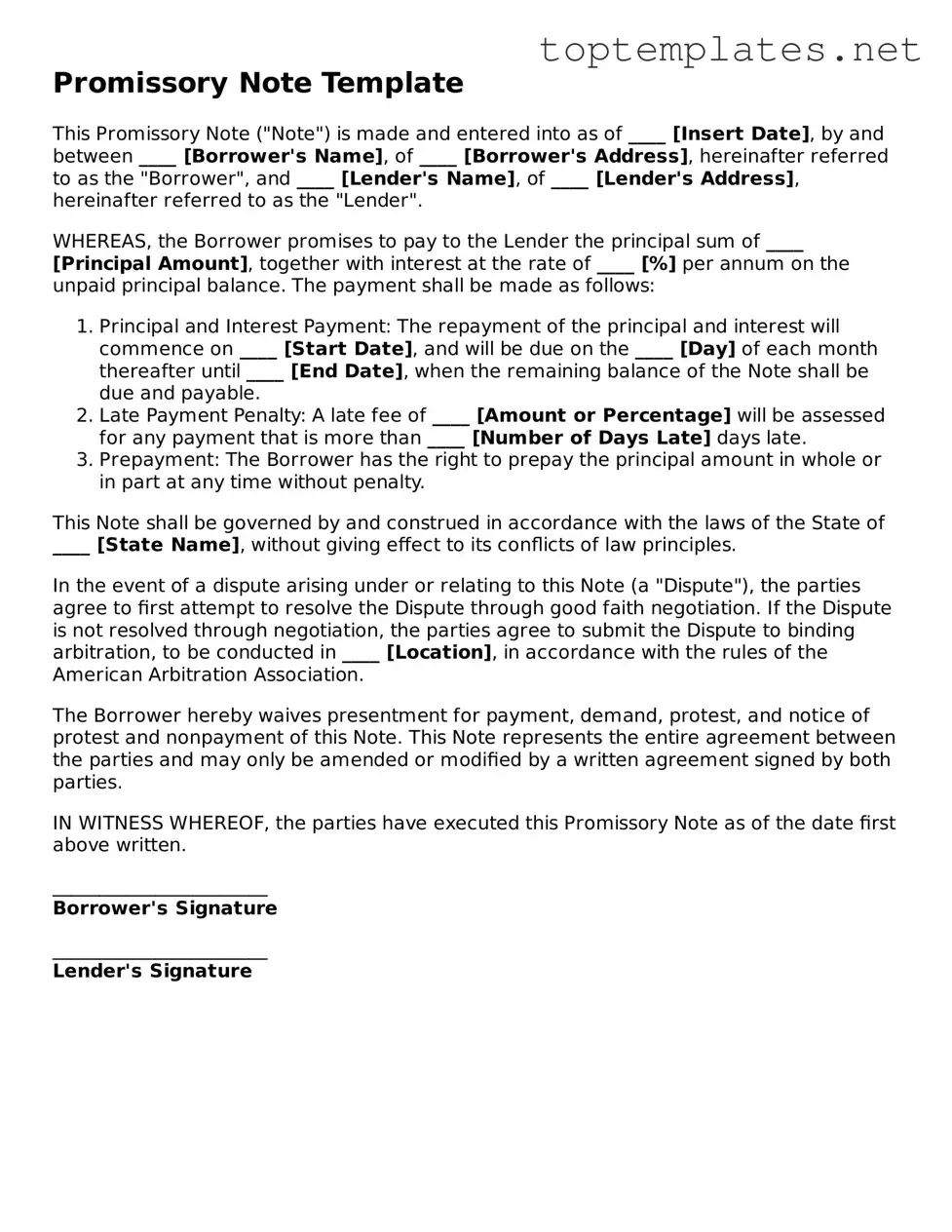Promissory Note Template
This Promissory Note ("Note") is made and entered into as of ____ [Insert Date], by and between ____ [Borrower's Name], of ____ [Borrower's Address], hereinafter referred to as the "Borrower", and ____ [Lender's Name], of ____ [Lender's Address], hereinafter referred to as the "Lender".
WHEREAS, the Borrower promises to pay to the Lender the principal sum of ____ [Principal Amount], together with interest at the rate of ____ [%] per annum on the unpaid principal balance. The payment shall be made as follows:
- Principal and Interest Payment: The repayment of the principal and interest will commence on ____ [Start Date], and will be due on the ____ [Day] of each month thereafter until ____ [End Date], when the remaining balance of the Note shall be due and payable.
- Late Payment Penalty: A late fee of ____ [Amount or Percentage] will be assessed for any payment that is more than ____ [Number of Days Late] days late.
- Prepayment: The Borrower has the right to prepay the principal amount in whole or in part at any time without penalty.
This Note shall be governed by and construed in accordance with the laws of the State of ____ [State Name], without giving effect to its conflicts of law principles.
In the event of a dispute arising under or relating to this Note (a "Dispute"), the parties agree to first attempt to resolve the Dispute through good faith negotiation. If the Dispute is not resolved through negotiation, the parties agree to submit the Dispute to binding arbitration, to be conducted in ____ [Location], in accordance with the rules of the American Arbitration Association.
The Borrower hereby waives presentment for payment, demand, protest, and notice of protest and nonpayment of this Note. This Note represents the entire agreement between the parties and may only be amended or modified by a written agreement signed by both parties.
IN WITNESS WHEREOF, the parties have executed this Promissory Note as of the date first above written.
_______________________
Borrower's Signature
_______________________
Lender's Signature
